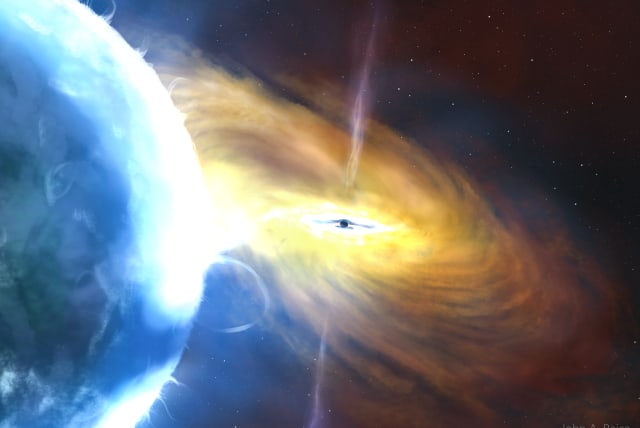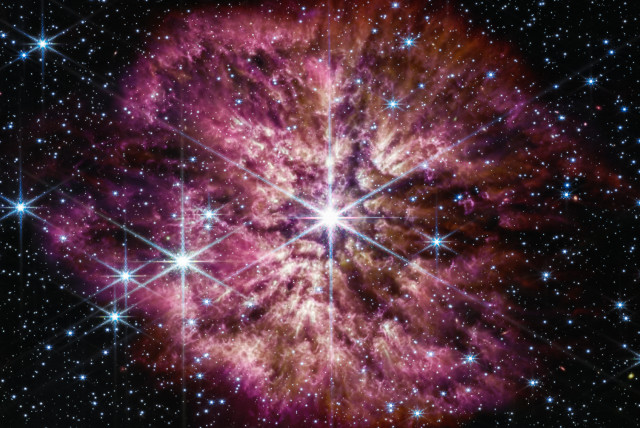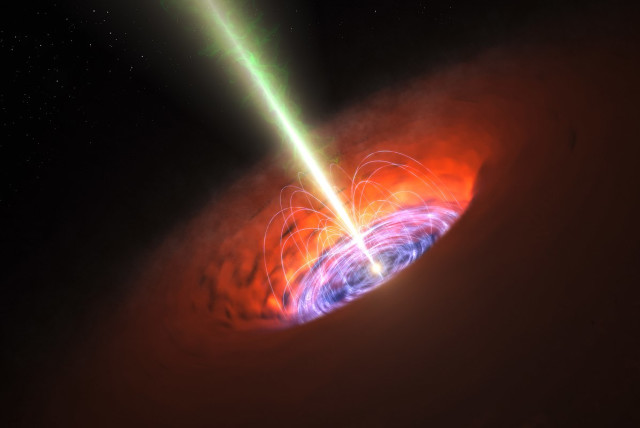Scientists discover most powerful explosion ever witnessed in space - study

An explosion in space, dubbed AT2021lwx, is 10 times more powerful than a supernova and 3 times more than a star being devoured by a black hole – and it's been going on for 3 years.
Scientists have managed to find the single largest cosmic explosion ever witnessed by humanity, 10 times brighter than a supernova, and it's been going on for three years, a new study noted.
The explosion has been dubbed AT2021lwx and is far more powerful than anything ever seen before.
The findings of this study were published in the peer-reviewed academic journal Monthly Notices of the Royal Astronomical Society.
A blast from the past: A massive explosion from billions of years ago reverberates today
The most fascinating part of this explosion is, of course, how long it's been going on for and why that matters.
Despite what one might assume, this explosion wasn't the brightest. That honor goes to GRB 221009A, a massive gamma-ray burst discovered by scientists in 2022.
Rather, this one has lasted far longer and as a result, yields far more energy.
To put the sheer scale of this explosion, consider two other cosmic metrics.
A supernova is essentially an exploding star. It happens when a star reaches the end of its life cycle.
Stars are fueled by energy production in their cores, which sees nuclear fusion make lighter elements form into heavier elements. It is this process that keeps the star hot, allowing gases to expand while simultaneously drawing its mass toward the core in a delicate gravitational balance.
When a star can no longer produce this energy, a process that takes millions or billions of years, it results in a massive explosion when all the various elements get blasted out into space, while the remnants of the star left behind either collapses in on itself to form a neutron star or a black hole.
And these explosions are so massive and so powerful that they reach high enough temperatures that they can form heavy elements that a star's normal heat just isn't strong enough to form.
Consider another cosmic metric: Tidal disruption events. These are what happens when a star is pulled into a black hole and gets ripped apart, which causes incredibly bright and powerful flashes of light, trillions of times brighter than the Sun.
But this cosmic explosion, AT2021lwx, is 10 times greater than a supernova and three times greater than a tidal disruption event.
To put this in an even greater perspective, this explosion was so massive and powerful that scientists discovered it completely by accident.
AT2021lwx was discovered in 2021 by the Zwicky Transient Facility in California and the Asteroid Terrestrial-impact Last Alert System (ATLAS) in Hawaii. The former helps track changes in brightness, which can indicate a supernova, while the latter tracks asteroids and comets.
And while doing routine research, they stumbled across an unexpected explosion of unknown origin and – at the time – scale.
And while normally, explosions from supernova or tidal disruption events would be over after a couple of months, this one just kept going for years – especially notable since the scientists at the Zwicky Transient Facility managed to figure out that it was going since at least 2020.
Now, scientists have managed to find a scale for AT2021lwx. To do this, the researchers behind this study were able to look at the light from the explosion and isolate different wavelengths of light. Then, once this spectrum was established, they were able to measure the different levels of absorption and emission.
This is important because it is through this principle that scientists can establish distance. And once scientists have figured out how to calculate AT2021lwx's distance, they can calculate how bright it was at its source and get a look at the scale of the explosion itself.
And to put it lightly, the explosion's source, whatever that may be, was extremely bright and long-lasting.
But that all begs the question: Just what is AT2021lwx?
What was the source of the massive cosmic explosion?
This question is still a source of debate, but there are some theories.
First, it should be noted that it wasn't a supernova, as it was far too bright for that and has been lasting too long.
The only things that are as bright as AT2021lwx are quasars, an object in the middle of the galaxy that blasts out beams of plasma and radiation and bright light fueled by the galaxy's supermassive black hole.
However, a quasar isn't an option here since they fluctuate too much and don't suddenly appear out of nowhere in an explosion that keeps going full strength for years without something having ever been seen there before.
A tidal disruption event also isn't an option, since it's been going on for too long and is too bright.
One theory involves another black hole-related event. However, instead of pulling in and ripping apart a star, it would have been pulling in a giant molecular cloud.
These giant clouds of gas, mostly hydrogen, are often the birthplaces of new stars and are also known as stellar nurseries. Theoretically, a black hole pulling that it could cause such a result.
But there is more research to be done. New astronomy facilities and tools are on the way, and it could be possible to take a better look at events like these. And if it is the result of something happening in a supermassive black hole, learning more about that could help us learn more about Saggitarius A*, the supermassive black hole at the center of our Milky Way Galaxy.
Jerusalem Post Store
`; document.getElementById("linkPremium").innerHTML = cont; var divWithLink = document.getElementById("premium-link"); if (divWithLink !== null && divWithLink !== 'undefined') { divWithLink.style.border = "solid 1px #cb0f3e"; divWithLink.style.textAlign = "center"; divWithLink.style.marginBottom = "15px"; divWithLink.style.marginTop = "15px"; divWithLink.style.width = "100%"; divWithLink.style.backgroundColor = "#122952"; divWithLink.style.color = "#ffffff"; divWithLink.style.lineHeight = "1.5"; } } (function (v, i) { });


